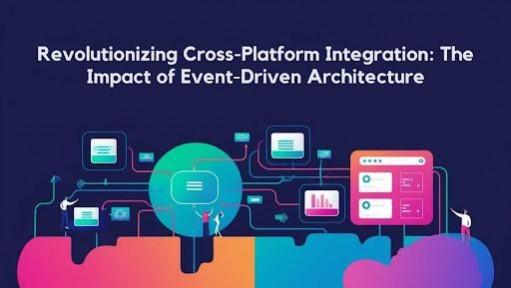
In the age of innovation, event-driven architecture (EDA) has emerged as a transformative force across industries, enabling seamless cross-platform integration, boosting real-time data processing, and revolutionizing system responsiveness. Koteswara Rao Yarlagadda, a leading researcher in this field, has explored the potential of EDA in optimizing operational efficiency and service delivery in his groundbreaking study. This architecture is not just a technological advancement but a cornerstone for organizations looking to scale and innovate in today's data-driven world.
Unleashing the Power of Real-Time Data
Event-Driven Architecture (EDA) has revolutionized sectors like telecommunications and healthcare by enabling real-time data processing. Its core advantage is the ability to instantly handle massive event streams, drastically reducing data processing latency and improving system responsiveness. Unlike traditional request-response models, EDA allows organizations to respond swiftly to live data, making timely, data-driven decisions. This shift fosters agility and dynamism, helping organizations adapt quickly to changing conditions, optimize operations, and enhance decision-making in real-time.
Transforming Telecommunications: From Reactive to Proactive
Event-Driven Architecture (EDA) has revolutionized telecommunications by enabling real-time network data processing. Telecom providers now manage vast data volumes, achieving 99.999% service availability. EDA's integration of systems improves fault detection, bandwidth management, and service automation, reducing complexity and enhancing network efficiency.
Financial Services: Revolutionizing Transactions and Fraud Detection
In financial services, Event-Driven Architecture (EDA) has boosted transaction speeds, reduced costs, and improved fraud detection. By integrating EDA with AI, banks can process vast volumes of transactions accurately, detect anomalies, predict risks, and enhance compliance reporting. This has significantly sped up fraud detection and decision-making.
Energy Management: Optimizing Smart Grids
The adoption of EDA in the energy sector has revolutionized smart grid management, enabling real-time monitoring and control with 99.999% reliability. Virtualized control systems and demand response mechanisms have improved grid stability and optimized energy consumption, making it easier to integrate renewable energy sources. Industrial consumers have also seen significant energy cost savings.
Education: Personalizing Learning through Data
Event-driven architecture in education personalizes learning by processing real-time student data. Learning management systems track over 1,000 data points per session to adjust content delivery, offering tailored experiences. This approach boosts student engagement, improving completion rates and retention of complex concepts in adaptive learning environments.
Smart Cities: Orchestrating Urban Infrastructure
In smart cities, Event-Driven Architecture (EDA) integrates urban infrastructure into a data-driven system. EDA enhances traffic management by predicting congestion and adjusting signals, cutting urban traffic by 35%. It also optimizes waste management routes, reducing fuel consumption and costs. Overall, EDA boosts public safety, improves emergency responses, and creates sustainable, efficient urban environments.
Looking Ahead: The Future of Event-Driven Architecture
As organizations continue to face growing volumes of data and increasingly complex integration needs, the role of event-driven architecture will only become more critical. The continued evolution of EDA, combined with advancements in AI, machine learning, and API management, is expected to push the boundaries of what's possible in real-time processing. His research underscores the potential for even greater efficiency and innovation in the future. By embracing EDA, organizations can stay ahead of the curve, leveraging real-time data to gain a competitive edge and drive digital transformation.
In conclusion, event-driven architecture is not just an innovation; it is a paradigm shift that is transforming industries across the globe. As Koteswara Rao Yarlagadda's work illustrates, the potential of EDA to enhance operational efficiency, improve customer experiences, and drive innovation is immense. As we move forward, the integration of EDA with emerging technologies will undoubtedly continue to shape the future of cross-platform integration, making systems more agile, responsive, and capable of handling the demands of an increasingly connected world.














